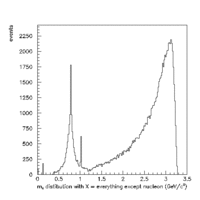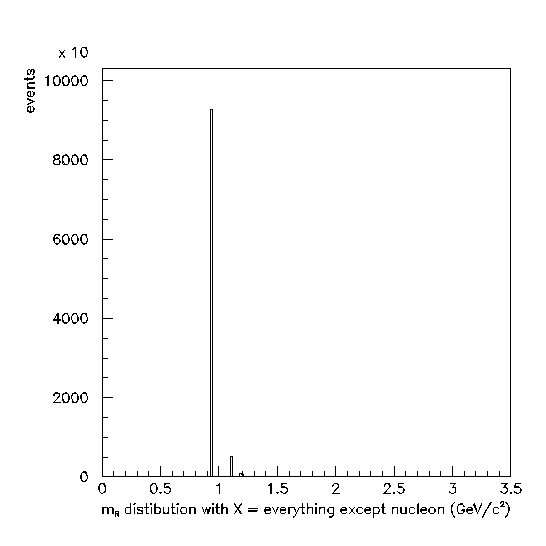Difference between revisions of "April 27, 2009 (11AM), Physics Working Group"
(→Comment on Pythia mass distributions - R. Jones) |
(→Comment on Pythia mass distributions - R. Jones) |
||
| Line 25: | Line 25: | ||
<table align="center"> | <table align="center"> | ||
<tr> | <tr> | ||
| − | <td>[[image:mx-4-27-2009.gif]]</td><td>[[image:mr-4-27-2009.gif]]</td> | + | <td>[[image:mx-4-27-2009.gif|200px]]</td><td>[[image:mr-4-27-2009.gif]]</td> |
</tr> | </tr> | ||
</table> | </table> | ||
Revision as of 18:24, 27 April 2009
Contents
Connect Information
ESNET and EVO will be available:
1. ESNET: 85-42553 (85-HALLD)
2. An EVO room under GlueX will be reserved
Agenda
1. Simulating the phi using parametric MC (Michael Dugger).
2. May Collaboration Meeting agenda (Ryan)
3. Updates on INT meeting? (Jo or Adam or Curtis)
4. The idea of a physics experts list? (Ryan):
Comment on Pythia mass distributions - R. Jones
Michael Dugger showed some mass distributions from the bggen generator for beam photons in the region 8.5 - 9.0 GeV that peak strongly near the maximum value of mX. However experience with diffractive production tells us that the yield will drop off above 2.5 GeV/c^2, with very little yield above 3.0 GeV/c^2 -- the so-called tmin effect. To check out if this effect is coming from the parametric Monte Carlo or from Pythia itself, I decided to plot the output coming straight out of bggen, selecting only events from beam photons in the window 8.5 - 9.0 GeV. To make the plots, I had to decide how to distinguish the products of mX from particles coming from excited baryon decays. First, I consider only proton and neutron recoils.
 |  |
Physics Experts List?
I would like to try to put together a "physics experts list." The idea would be to try to break down the GlueX physics program into "subtopics" (e.g. meson spectroscopy, baryon spectroscopy, charm, etc.) and to associate "experts" (one or more) with each subtopic.
The short-term role of the experts would be to:
- (i) serve as consultants in their field (e.g. I personally don't know a lot about DVCS and if I have a question it would be nice to know who I could turn to to get an answer);
- (ii) help develop the physics case for their field;
- (iii) identify key analyses that could be done in their field;
- (iv) (longer term) try to organize simulations of these key analyses (if appropriate) or at least make sure they are feasible with GlueX.
A preliminary division of topics might look like this:
- 1. Meson Spectroscopy (hybrids, glueballs, vectors, etc.)
- 2. Baryon Spectroscopy
- 3. Scattering (DVCS, pion form factor, GPD's, etc. etc.)
- 4. Charm
- 5. Primakoff and eta physics (gamma gamma widths, rare eta decays, etc.)
- 6. In-Medium Modifications
I would eventually like to devote a physics working group meeting to each of these topics where we could (with the help of experts) identify the key analyses, think about the physics cases, discuss the simulations needed, etc.
Note that I'm not proposing we "break into subgroups." I would just like to start identifying physics topics and their associated experts so we can start looking at them in a little more depth.